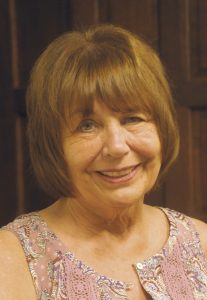Eye-movements are key to promising mental-health therapy

By Seth Schmidt
The treatment technique sounds geeky and academic:
Accelerated Resolution Therapy.
But for Trudy Ujdur, a nurse practitioner who specializes in behavioral health at Sanford Tracy, Accelerated Resolution Therapy, or ART, is revolutionary.
“It’s really quite remarkable,” Ujdur says, in describing a wide range of mental health issues, anxiety, panic attacks, depression, substance abuse and post-traumatic stress disorder. The new ART therapy, she’s found, is showing outstanding success in helping patients move on from traumatic emotional pain of physical and emotional abuse. It’s also helping many people stop smoking and lose weight.
Since completing three levels of training and starting to use the technique in January. Ujdur has used the ART therapy on about 130 patients. Almost all have enjoyed rapid improvement with their issues, she says.
“I know it sounds almost too good to be true,” Ujdur explains. “But the results that I’ve seen have been so positive. It’s exciting.”
ART, she stresses, is evidence based, with research studies validating the anecdotal evidence that medical practitioners are experiencing. The U. S. Surgeon General’s office, she added, has been ”amazed” by early success rates.
Happy replaces pain
The ART technique “reprograms” how the brain stores and processes disturbing memories, Ujdur says. Once that transformation takes place, the past trauma no longer triggers strong emotional and physical reactions.
“It’s like creating new pathways in the brain,” Ujdur explains.
To accomplish this, ART employs relaxation techniques that trigger the rapid eye movements that people normally only experience when dreaming.
During this relaxed, dream-like state, patients are guided by the therapist to think about or visualize the source of their pain.
“This can be very emotional,” Ujdur comments. However, once the traumatic experience is visualized and confronted, the therapist can gently use imagery and suggestion to move the client beyond the spot where they are “stuck.”
For more on this article, see this week’s Headlight-Herald.
